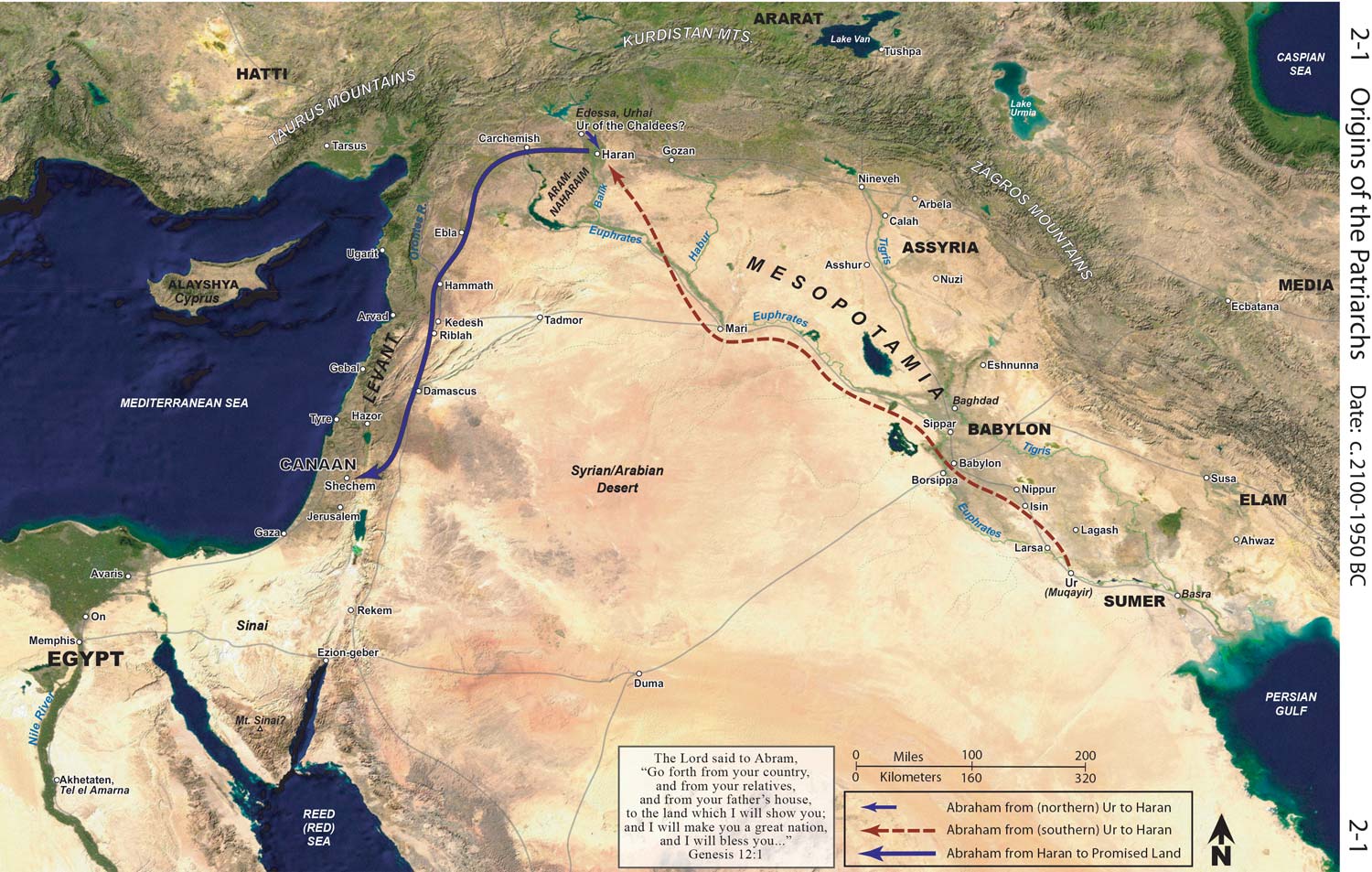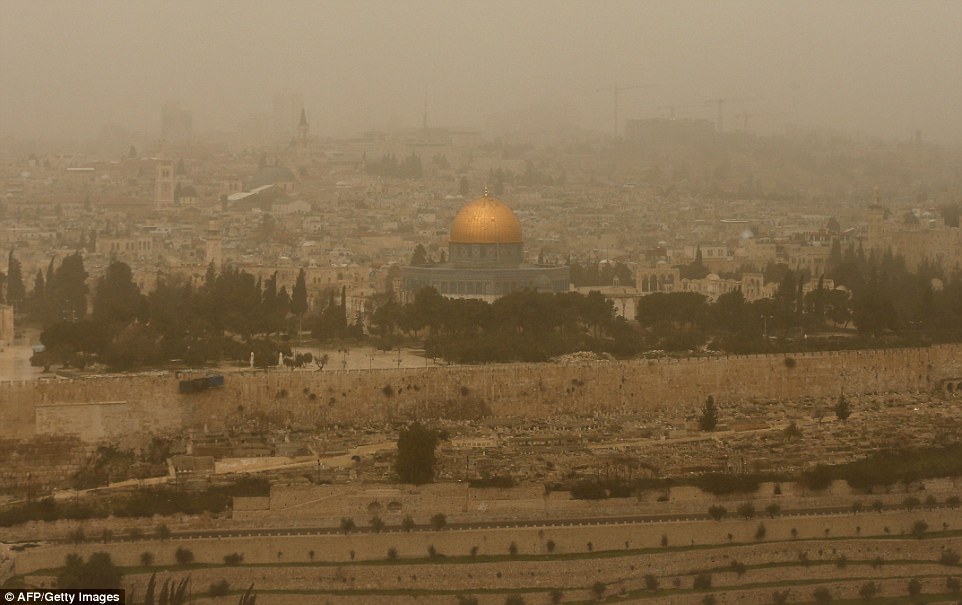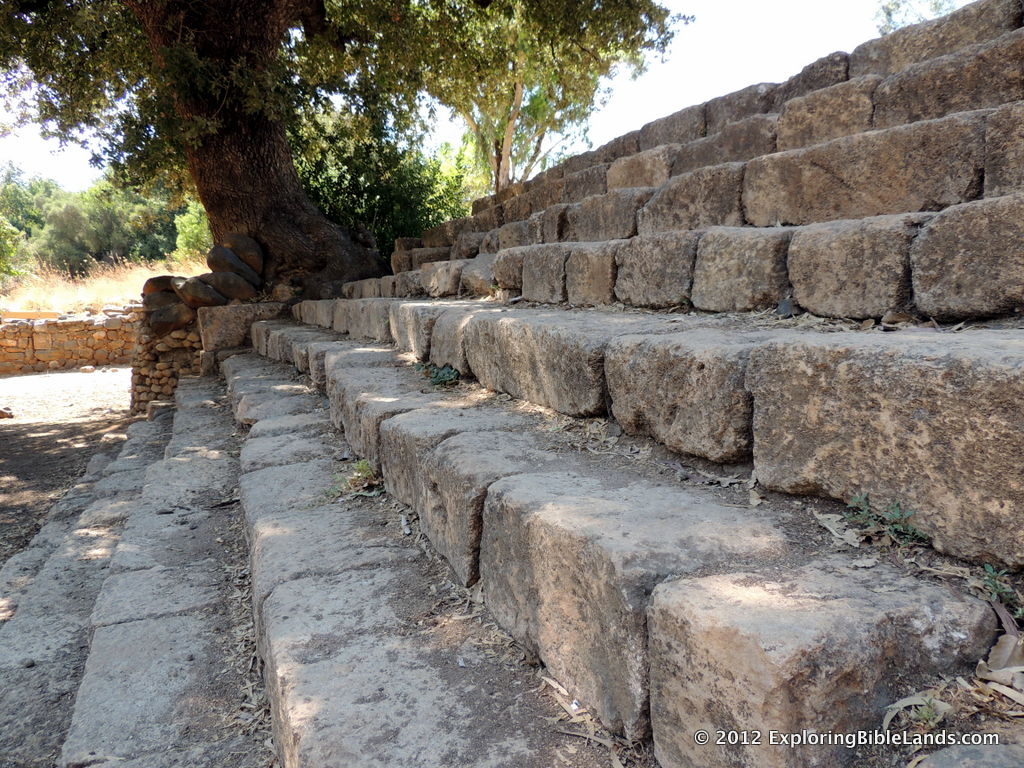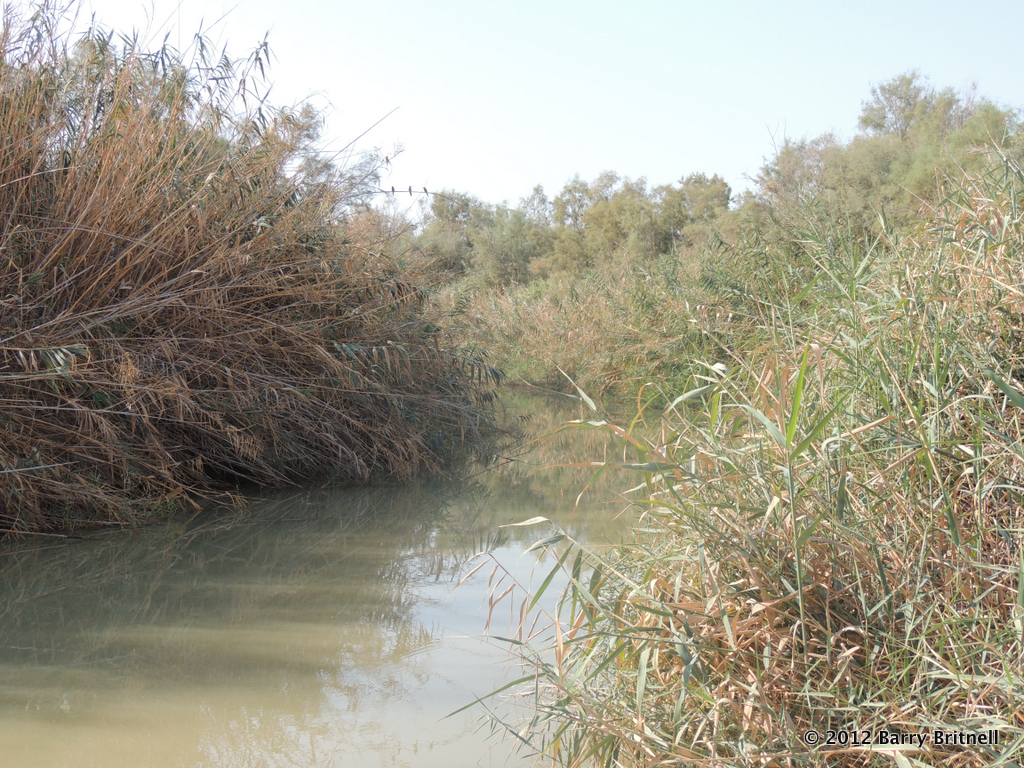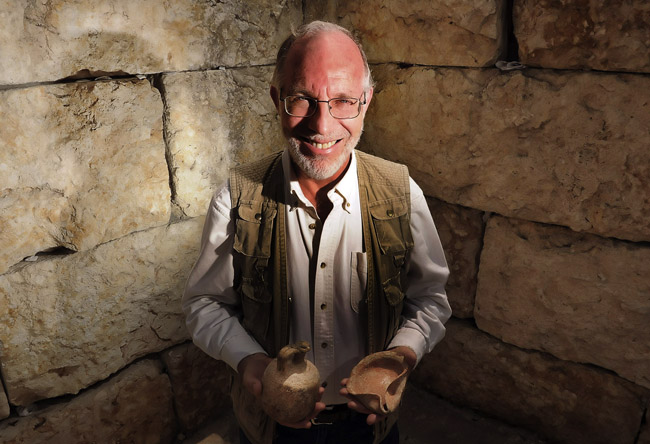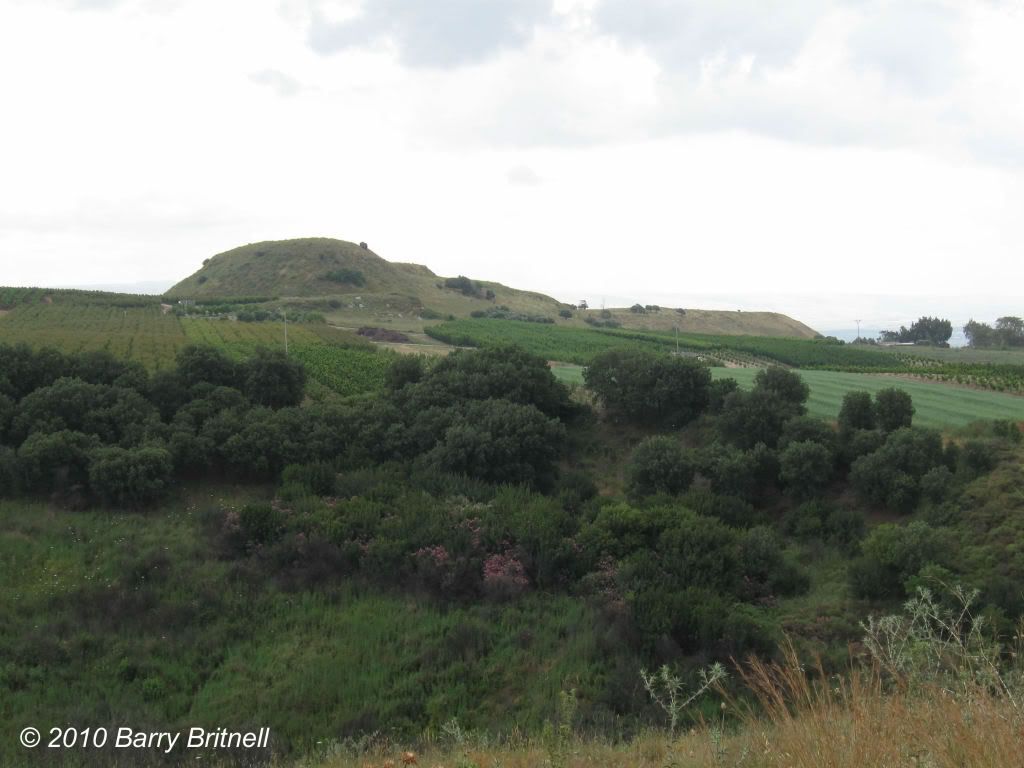Well, today got off to a strange start…but, as always, everything works out in the end. We were originally scheduled to take a boat ride on the Sea of Galilee. However, there was no boat at the dock at 8:30. So, our tour guide called the rental company and there was a miscommunication on the date. They had us scheduled for tomorrow morning. No matter. With only about a million things to see and do in Israel, we just shuffled our schedule a bit, loaded the bus and headed out.
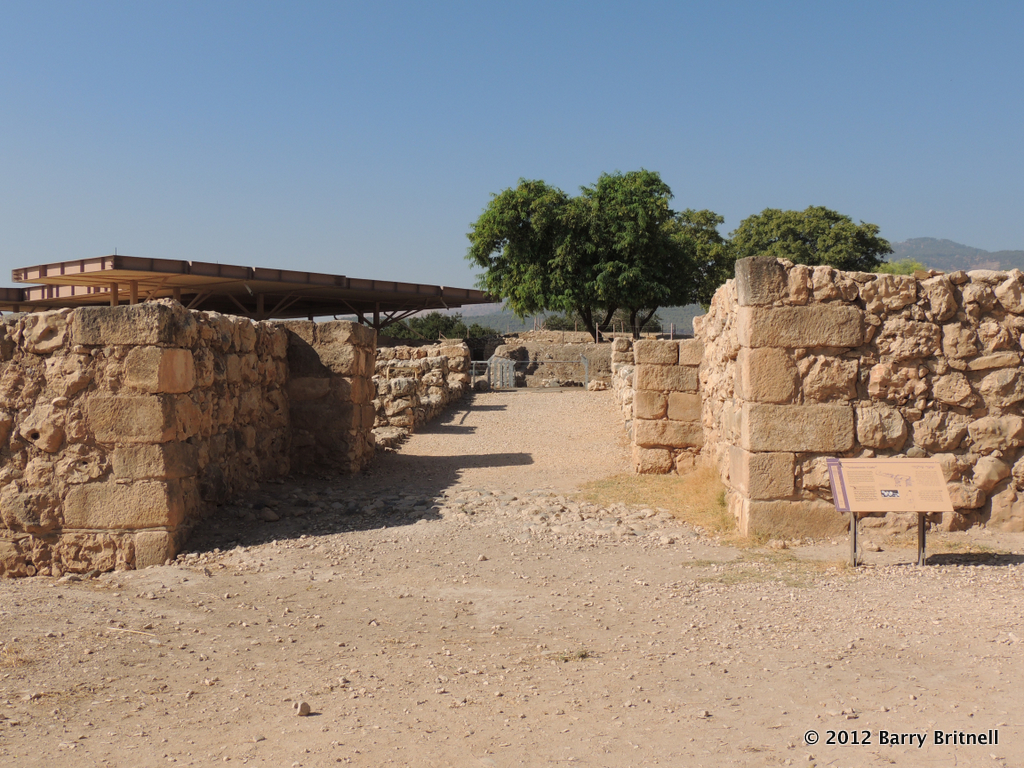 We spent the entire day north of the Galilee region. Our first start was at the city of Hazor (it is pronounced "hot-sore"). Hazor is only mentioned a few times in the Bible, but it was a very important city. When the Israelites came into the land, Joshua conquered the city as it was one of the most important cities at that time. Later, Solomon built huge walls at Hazor to protect it. Many of these walls (including parts of the gate) are visible today. By standing on the tel, you can easily see the geographical importance of the city.
We spent the entire day north of the Galilee region. Our first start was at the city of Hazor (it is pronounced "hot-sore"). Hazor is only mentioned a few times in the Bible, but it was a very important city. When the Israelites came into the land, Joshua conquered the city as it was one of the most important cities at that time. Later, Solomon built huge walls at Hazor to protect it. Many of these walls (including parts of the gate) are visible today. By standing on the tel, you can easily see the geographical importance of the city.
From Hazor, we made a brief stop at Abel Beth-Maacah. If you consider yourself a Bible student and don't recognize the name, don't feel bad. It's only mentioned a couple of times, most notably in 2 Samuel 20. Go back and read the story again. (Warning: The story doesn't end well for Sheba.) The location of this city has been known for years, but they have just started initial excavations of the tel this year. I mentioned this in an earlier blog post.
Our next stop was an unexpected bonus. In the First Century BC, Herod the Great erected three temples to Augustus. The first one was at Caesarea Maritima. The second was at Samaria. The third was near Paneion. For years, it was thought that this temple was located at the traditional location of Caesarea Philippi. However, recent excavations at Omrit has cast doubt on that. At Omrit (which is located about three miles from Caeserea Philippi), they have found the ruins of a Roman temple that is similar to the ruins at Caesarea Maritima and Samaria. The site is located along a VERY SKINNY single lane road that a regular car could barely navigate. However, our expert bus driver, Fawzi, was determined. After a few minutes and several near misses of trees, etc, the site was within view. It was fantastic to see it and help us to better understand the time of the first century.
 From Omrit, we went to Dan. The city of Dan was originally called Laish until the Danites conquered the city after the conquest. The Danites were originally given land along the Mediterranean coast, but due to their neighbors (Philistines), they decided to relocate to Laish, which they renamed Dan. Dan became a very powerful city in Solomon's time. By the time of the Divided Kingdom, Jeroboam constructed a "high place" so that the nation of Israel could come here to worship the false god Baal. Archaeologists have found the "high place" and I have included a picture of the steps leading up to it.
From Omrit, we went to Dan. The city of Dan was originally called Laish until the Danites conquered the city after the conquest. The Danites were originally given land along the Mediterranean coast, but due to their neighbors (Philistines), they decided to relocate to Laish, which they renamed Dan. Dan became a very powerful city in Solomon's time. By the time of the Divided Kingdom, Jeroboam constructed a "high place" so that the nation of Israel could come here to worship the false god Baal. Archaeologists have found the "high place" and I have included a picture of the steps leading up to it.
Our next stop was at Caesarea Philippi, where Jesus asked his disciples "…but who do you say that I am?" Peter famously answered, "Thou are the Christ, the Son of the Living God". Ferrell Jenkins spoke to us about the importance of Jesus asking his disciples this question at this location. Seeing the area helps you to understand the true meaning of the conversation.
 On our way back to the Galilee area, we drove back through the Golan Heights which is now under Israeli control since the Six-Day War in 1967. For much of the ride, you were right on the border of Syria. How close were we? Well, check out the picture. At one of our stops, I was able to take a picture of a Syrian flag flying in one of their cities.
On our way back to the Galilee area, we drove back through the Golan Heights which is now under Israeli control since the Six-Day War in 1967. For much of the ride, you were right on the border of Syria. How close were we? Well, check out the picture. At one of our stops, I was able to take a picture of a Syrian flag flying in one of their cities.
Finally, we made a brief stop by the Jordan River just north of where it flows into the Sea of Galilee.
Overall, it was a great day. Our boat ride has been rescheduled for tomorrow morning, so we'll try to enjoy that tomorrow. Until then…Shalom.
 BONUS: As I understand it, the Third Grade at Athens Bible School is following my blog and mentioning the places I mention in their Bible Class. I thought that I would throw in a bonus picture for all of them. Being in another country is really interesting. You have to deal with different languages, different customs and a different way of life. However, occasionally, you come across something that reminds you at home. That happened at lunch today. We stopped by a familiar restaurant. From the picture, can you guess where we stopped?
BONUS: As I understand it, the Third Grade at Athens Bible School is following my blog and mentioning the places I mention in their Bible Class. I thought that I would throw in a bonus picture for all of them. Being in another country is really interesting. You have to deal with different languages, different customs and a different way of life. However, occasionally, you come across something that reminds you at home. That happened at lunch today. We stopped by a familiar restaurant. From the picture, can you guess where we stopped?







